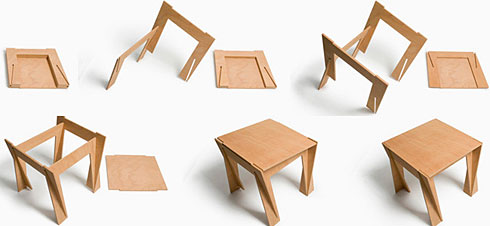How to make users feel that the product is more valuable? Users do not need diamond-encrusted and gold-plated products. The answer may be simpler than you think, and that is to add DIY elements to the product.
A few years ago, scholars did a series of surveys, and they found that when people build products by themselves, they cherish it more and think it is more valuable. This mentality was later called the “IKEA effect”. As we all know, most of IKEA’s home furnishings are scattered components, and people need to assemble them by themselves when they return home. In this way, IKEA can increase product prices to some extent.
This mentality is actually well understood: users need to spend time and energy to build a product, and the added value and memories generated in it are part of the added value. Users will feel that they have spent money and bought more things. In addition, because the product contains the user’s “hardwork”, they will cherish this product even more. For manufacturers, they can maintain the same ex-factory price, but save the cost of assembly, so they make more money.
Of course, IKEA is not the only manufacturer that makes money through this method. Overseas, there is also Build A Bear, where users can create their own teddy bears. There is a shop called Dinner By Design. They invite customers to shop together, research recipes, and then go home to finish cooking. The MakeBlock and UArm that appeared before are all such products. The beta version of the Xiaomi router also needs to be assembled by the user.
It is not easy to operate the “IKEA effect” well. Here are a few tips.
Only let users assemble products
General users cannot engage in too technical jobs, such as writing code or welding wearable devices. They are more looking forward to the action of “assembly”, to be honest, they don’t need much customization. On Children’s Day, I gave gifts to everyone, and some people took Gunpla. Although everyone puts together the same model, most people think this process is very valuable.
So users only want to “finish the product” instead of thinking about what tricks it can change.
Don’t make assembly too troublesome
This is easy to understand, and an assembly program that is too cumbersome will deter users. So most of the things should be assembled well, or have different difficulty for different “players”. If the product you provide is indeed a bit complicated, you must be equipped with relevant tools in it. The lack of tools will drive away many consumers.
But this balance is difficult to grasp, how to grasp the user’s psychology is very important.
Establish user expectations in advance
Let them see how this product is made and what changes it can make in their lives. Users will feel “Yes, this is the effect I want!” Such expectations will eventually return to the added value.
IKEA’s method is to use lower prices to create a more beautiful idea for users. They will display beautiful home scenes on the packaging, and having such a life does not need to spend a lot of money, and in the end customers will pay for it.
Don’t expect too much
Not everyone likes DIY, I can only say that most people have this kind of psychology. Or everyone has different levels of DIY. As mentioned above, different “players” have different requirements, and the most important thing is to meet the requirements.
The author thinks that this can give more imagination to smart hardware, especially smart hardware in the home category. Home smart robots, or pure entertainment hardware, can take advantage of this effect. How should the hardware play the “humanities card”? DIY is a good choice.


